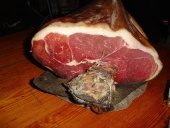


Alex Ojeda wrote:I have access to a load of lemon peel for when I make my organic lemon juices and cleanses. Is there anything that can be done with these that could fit under the heading of Permaculture? Realize that these have been put through a 2 ton press and are not pretty anymore. I made candied peels one time, but that's just silly amounts of sugar. Currently I have a 55 gallon barrel that is composting. If they can compost just sitting in a barrel (it's an experiment). I sometimes dig a hole and bury a bucket full. Any other ideas or experiences you could share with me?

Suzy Bean wrote:
There is an article in the recent Backhome Magazine (Sept/Oct 2011) on Curing Meat at Home, with a subtitle: “A warmer climate doesn’t matter if you try our curing technique.” They use an old freezer chest with a temperature regulator, set to 32 degrees F. They make a brine with noniodized salt, and sometimes brown sugar. They cover the meat in the brine in sealed buckets or ziplocks, and leave it for a week or two, depending on how thick the meat is. You can then smoke the cured meat. They say: “Properly cured and smoked bacon will keep without refrigeration, but because it is salty enough to do so, it needs to be soaked in plain water overnight before cooking.” You can use this method for any kind of meat, such as in making corned beef.

Freem wrote:
It is a tribble, obviously!
kazron wrote:
slightly related and may not help...
when I was at a permaculture project a couple of years ago the dishwashing detergent was made from a combination of wood ashes and water that had orange and lemon peels soaked in it for a few days at a time. this soaking water was a continuous cycling of peels, as after a week or two a peel would begin to mold in the hot climate. i do not know the science behind it. perhaps water is adequate to draw out whatever qualities you seek.

Jeff Millar wrote:
Found this, it's a little more conventional. Hope it helps. My turkeys and chickens are crazy about mulberries.
http://nutritiondata.self.com/facts/fruits-and-fruit-juices/1961/2
H Ludi Tyler wrote:
Try building a fire over it, under safe conditions, of course.

John Polk wrote:
The Chinese chef's knife is a monument to frugality. Back "in the day", knives were made by sword makers. The warlords could afford many swords, but the typical family could only afford one knife. Instead of putting a knife at each place setting, the cook did all of the cutting with the one knife. Most Asian cuisines prepare meals where each piece is bite sized (chop sticks are cheaper than knives).
Besides cutting with the edge, the straight back was used as a tenderizer, the blunt end of the handle, and the flat of the blade are used for crushing garlic, ginger, herbs,or whatever. I have watched a Chinese cook use the square tip to remove phillip head screws so he could repair his rice cooker. It was a one-size-fits-all, multipurpose kitchen tool.